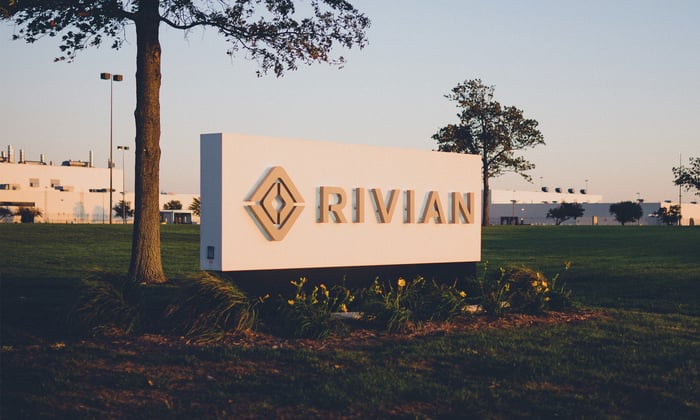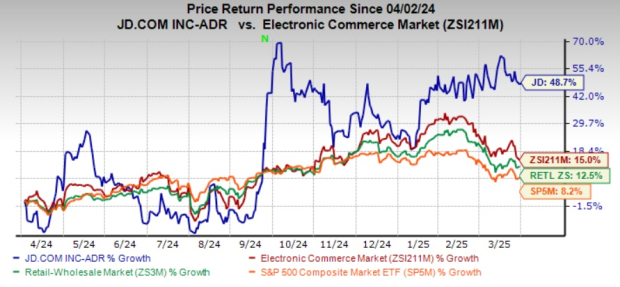Rivian’s Q4 Surplus and Ambitious 2025 Profit Goals
Rivian Automotive (NASDAQ: RIVN) reported its full-year 2024 earnings in late February. Although it faced operational challenges throughout the year, Rivian closed the fourth quarter on a hopeful note, which is critical as it sets its sights on 2025. The upcoming first-quarter earnings report, due around May 5, will serve as a significant test of its performance.
Overview of Rivian’s Fourth Quarter
Rivian is a burgeoning electric vehicle (EV) manufacturer, working diligently to establish its business from the ground up. This task is not only formidable but also capital-intensive, accounting for its ongoing financial losses. Historically, other start-ups, like Tesla (NASDAQ: TSLA), have similarly navigated this tough early phase before achieving profitability.
Throughout 2023, Rivian concentrated on increasing its production capacity. It successfully boosted output to approximately 57,000 vehicles. Looking ahead, a primary goal for 2024 is to optimize the manufacturing process, aiming to cut costs. Part of this effort included a significant overhaul of its production line at the start of the year.
The renovation of the production line proceeded smoothly. However, Rivian encountered parts shortages as it resumed operations. To adapt, the company adjusted the types of vehicles it was producing, thus maintaining its output levels while striving to achieve its key objective for the year—a modest gross profit in the fourth quarter. Rivian accomplished this, reinforcing its commitment to transparency with investors.
Targeting Full-Year Profitability in 2025
It is essential to distinguish that a gross profit is not the same as positive net earnings. A gross profit indicates that Rivian is selling its vehicles for more than it costs to produce them. This is a vital milestone on the path toward overall profitability. Rivian’s overarching ambition for 2025 is to achieve a gross profit for the entire year.
The company’s gross profit from Q4 was categorized as “modest,” and Rivian plans to aim for similar results quarterly moving forward. This strategy underscores the importance of the first-quarter earnings report as a crucial indicator of Rivian’s financial health.
Rivian’s stock price has dramatically decreased from its all-time highs but has remained relatively stable over the past year. Despite this, management has consistently met its publicly stated objectives. Continued performance aligned with its goals may instill greater confidence among investors, enhancing their perception of the business’s potential.

RIVN data by YCharts
Another positive for Rivian is its collaboration with major companies such as Amazon, which has relied on its delivery trucks for years. Having established reliability, Rivian is now offering similar vehicles to other businesses. Additionally, its partnership with Volkswagen aims to integrate Rivian’s technology within its own vehicles, resulting in a cash influx that will help bolster Rivian’s financial standing. This relationship could also evolve into a significant, long-term partnership.
Rivian is not seeking customers; it already has the backing of influential corporations globally.
Risk and Opportunity with Rivian
Investing in Rivian may not be suitable for risk-averse individuals. However, for those willing to embrace aggressive investment opportunities in a rising company, it could be an appealing option. As Rivian continues to meet its goals, the likelihood of becoming a profitable EV manufacturer increases. Its robust business model, combined with an impressive network of partners, suggests that acting promptly may be prudent.
Seize Your Second Chance at a Profitable Investment
Have you ever felt like you missed investing in a successful company? If so, you might want to pay attention now.
Occasionally, our expert analysts identify what they call a “Double Down” Stock recommendation for companies poised for growth. If you think you missed your chance previously, now might be the optimal time to consider investing again. The performance numbers speak for themselves:
- Nvidia: if you had invested $1,000 in 2009, you’d have $284,402!*
- Apple: if you invested $1,000 in 2008, you’d have $41,312!*
- Netflix: if you invested $1,000 in 2004, you’d have $503,617!*
Currently, we are issuing “Double Down” alerts for three outstanding companies, and opportunities like this may not arise often.
Continue »
*Stock Advisor returns as of March 24, 2025
John Mackey, former CEO of Whole Foods Market, an Amazon subsidiary, is a member of The Motley Fool’s board of directors. Reuben Gregg Brewer has no position in any of the stocks mentioned. The Motley Fool has positions in and recommends Amazon and Tesla. The Motley Fool has a disclosure policy.
The views and opinions expressed herein are the views and opinions of the author and do not necessarily reflect those of Nasdaq, Inc.


